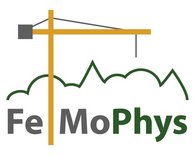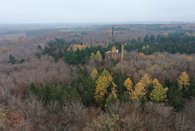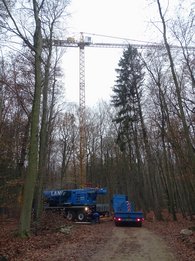FeMoPhys - Development of a remote sensing-based monitoring procedure based on a physiologically founded vitality assessment of main tree species in mixed stands


Funding by: Waldklimafonds mit Mitteln des BMEL und des BMUV
Funding ID: 2220WK80A4
Project executing/management agency: Fachagentur nachwachsende Rohstoffe - FNR
Funding period: 01.09.2022 – 30.04.2027
project partners:
- Landesbetrieb Forst Brandenburg – Landeskompetenzzentrum Forst Eberswalde (LFE)
- Technische Universität Berlin – Institut für Landschaftsarchitektur und Umweltplanung: Fachgebiet für Geoinformation in der Umweltplanung
- LUP – Luftbild Umwelt Planung GmbH
- Landesforst Mecklenburg-Vorpommern Anstalt des öffentlichen Rechts – Betriebsteil Forstplanung, Versuchswesen, Forstliche Informationssysteme
- Universität Greifswald – Mathematisch-Naturwissenschaftliche Fakultät – Biologie – Institut für Botanik und Landschaftsökologie – Landschaftsökologie und Ökosystemdynamik
While the effects of climate change become apparent, the need for information on the vitality of forests is increasing. Since detailed information is often lacking, the numerous estimates on forest health are contradictory and speculative. Forest remote sensing can close this information gap. With the improvement of sensor technology (e.g. hyperspectral) and the cost-effective use of UAVs, the application possibilities of remote sensing methods for the vitality assessment of woody plants are increasing. At the same time, forest physiology can determine plant constituents with a high indicator value for the assessment of vitality or stress states for a large number of tree species by means of semi-automated laboratory procedures with relatively high sample throughputs.
Against this background, the project FeMoPhys (2022 - 2027) aims to build a bridge between the modern possibilities of forest remote sensing and woody plant physiology. The project is being implemented at the GFZ research site in the Demmin area (Mecklenburg-Western Pomerania). A 45 m high rotating crane installed here in the forest offers unique opportunities for this research approach. The three-dimensional crown space of a stand of old trees (beech, oak, larch, douglas fir and spruce) is continuously accessible via the rotating crane and is available for various sampling and measurements in the crown space of many tree individuals of these species at different states of vitality. Physiological stress markers of the crown leaves, growth signals of crown, trunk and roots as well as a close-meshed sampling grid with remote sensing sensors (drone, satellite) are analysed in collaboration with colleagues from the cooperating research institutions. The goal is a better understanding of stress and stress signals in the trees and in the remote sensing data.




![[Translate to English:] Kran mit Gondel im Mischwald](/fileadmin/_processed_/0/e/csm_P1120482_fbfb57ccdc.jpeg)
![[Translate to English:] Kran im Mischwald](/fileadmin/_processed_/f/4/csm_P1120492_642bbee67d.jpeg)

